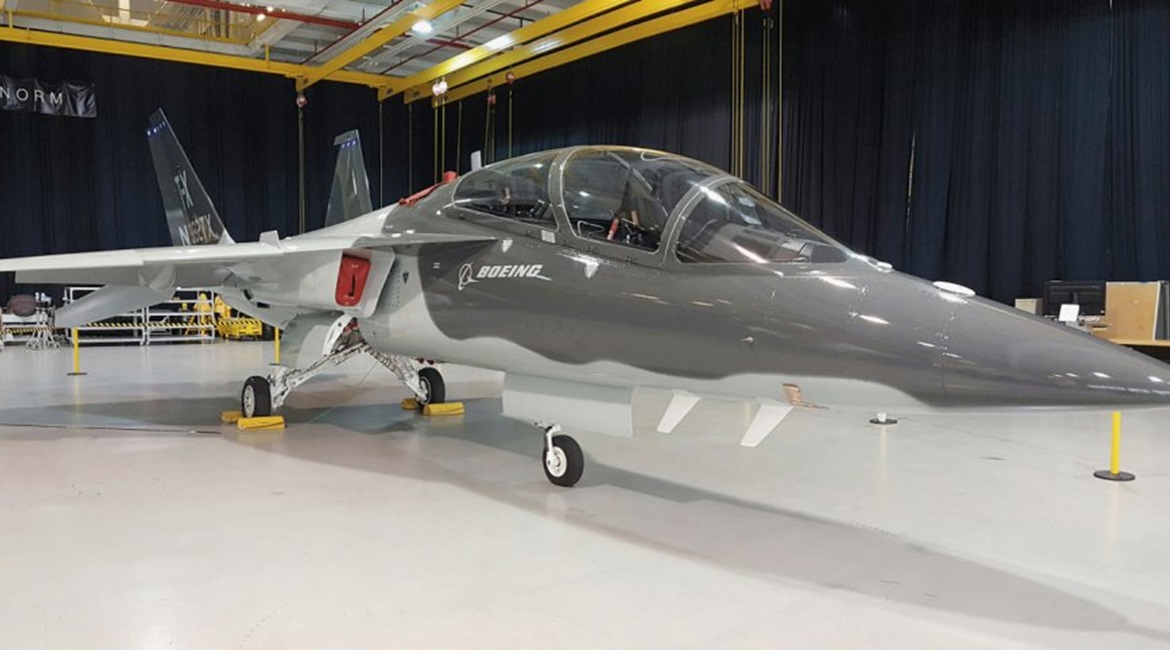
Boeing is progressing the engineering and manufacturing development (EMD) element of its contract to deliver 351 new T-7A Red Hawk advanced jet trainer aircraft to the US Air Force (USAF), reporting 80% completion of the first phase.

One of the two production-representative jets that have flown more than 200 times in support of the current EMD testing. (Janes/Gareth Jennings)
Speaking at the company’s first ‘virtual’ pre-Farnborough International Airshow event on 14 July, Vice-President of International Sales, Strike, Surveillance and Mobility Thomas Breckenridge said that the first of three EMD phases had completed more than 200 test flights of the two production-representative jets (PRJs) currently flying.
“Significant progress is being made, [and] we are on track for initial operating capability in 2024,” Breckenridge said, added that many of the USAF performance targets had been exceeded.
With EMD Phase 1 proceeding on track, Breckenridge noted that hot-weather trials, high angle-of-attack (AoA) with no nose boom, and a continuation of in-flight engine restart tests would be conducted during the next few weeks.
News of the good progression followed the successful completion of the USAF’s critical design reviews (CDRs) for the aircraft. This milestone, announced by the US Air Force Life-Cycle Management Center (AFLCMC) on 9 June, was reached when the Aircraft CDR and overall System CDR were signed off as important steps on the path to production for the Red Hawk, solidifying the aircraft and subsystem designs.
The conclusion of the Aircraft CDR and System CDR followed the successful completion earlier in the year of the CDR for the ground-based elements of the jet trainer. The T-7A Ground Based Training Systems (GBTS) CDR paved the way for manufacturing on the ground-based elements of the USAF’s aircrew training system to commence.
Looking to read the full article?
Gain unlimited access to Janes news and more...






